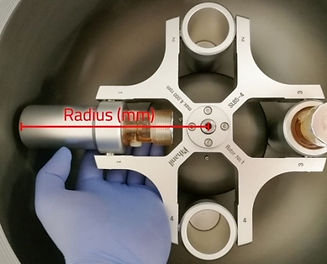
Q WORLD MEDICAL COMICS
RCF & RPM for Centrifuge

✅ × g (RCF — Relative Centrifugal Force)
-
This is a measure of force, specifically how many times greater than gravity (g) the centrifugal force is.
-
It depends on the speed (rpm) and the rotor radius.
-
It is the true measure of how hard your sample is being spun.
✅ rpm (Revolutions Per Minute)
-
This is a measure of speed, how fast the rotor is spinning.
-
It does not tell you directly how much force (g) is applied, unless you also know the rotor radius.
🔁 Relationship Between g and rpm:
To convert between rpm and RCF (g), use this formula:
Where:
-
RCF is in ×g
-
r is the rotor radius in centimeters
-
rpm is revolutions per minute
🧪 Example:
If your rotor has a radius of 10 cm:
RCF==1.118×10−5×10×(10,000)2=11,180g
So 10,000 rpm with a 10 cm rotor gives about 11,180 × g, not 10,000 × g.
🔍 Summary:
-
✅ g (RCF) is what really matters for separating samples.
-
❌ rpm alone is not enough to compare centrifuge settings across machines or rotors.
-
✅ Use RCF to standardize protocols.